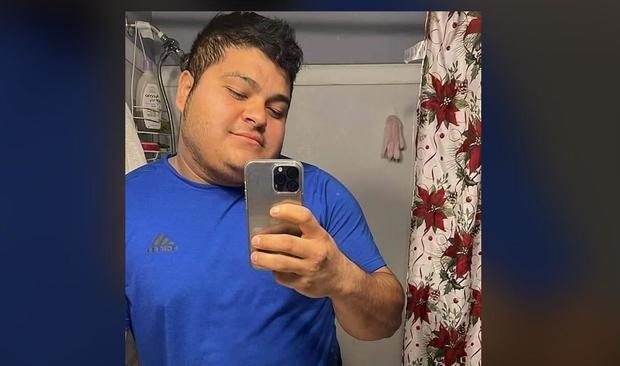▶ Watch Video: Two bodies recovered near Key Bridge collapse site
BALTIMORE — The bodies of two men were recovered Wednesday from the site of the Francis Scott Key Bridge collapse in Baltimore, officials said.
Four people remain missing and are presumed dead, but recovery efforts were paused Wednesday, and the focus is now shifted to removing the ruins of the bridge, which was once traveled by over 30,000 vehicles each day.
The transition was made Wednesday from a recovery mission to a salvage effort because officials believe vehicles are encased in the bridge debris, and divers can no longer operate around the debris.
The Navy says it is mobilizing barges outfitted with heavy lift cranes to help clear the channel of debris. Three cranes with varying lift capacities are expected, along with support vessels to remove submerged portions of the bridge, but it’s unclear when they will arrive.
Maryland State Police Col. Roland Butler Jr. said divers found the men — identified as 35-year-old Alejandro Hernandez Fuentes and 26-year-old Dorlian Ronial Castillo Cabrera — around 10 a.m. in a red pickup truck 25 feet deep in the Patapsco River.
The bridge crumbled early Tuesday after a support column was hit by a large container ship that had lost power, sending people and vehicles into the water below.
“Based on the length of time that we’ve gone in this search, the extensive search efforts that we’ve put into it, the water temperature — that at this point we do not believe that we’re going to find any of these individuals still alive,” Coast Guard Rear Admiral Shannon Gilreath said in a news conference Tuesday evening.
Four remain missing, presumed dead
Two people were rescued from the water shortly after Tuesday’s collapse. One of the rescued workers was unhurt, the other was treated at the University of Maryland Medical Center and has been discharged.
All eight people were part of a construction crew filling potholes on the bridge at the time, Gilreath said.
Officials said they were from Mexico, Guatemala, El Salvador and Honduras.
Jennifer Homendy, the chair of the National Transportation Safety Board, said Tuesday afternoon that a local company, Brawner Builders, employed the workers.
Who are the victims?
So far, three of the missing workers have been identified:
- Maynor Yassir Suazo Sandoval, 35, originally from Honduras and who has been living in the U.S. for 20 years
- Miguel Luna, originally from El Salvador
- Dorlian Castillo Cabrera, 26, originally from Guatemala
All six victims were working on the bridge filling potholes at the time of the collapse. Luna was identified by a nonprofit organization, and three South American nations indicated missing citizens but stopped short of identifying them as victims.
State police said Fuentes is from Veracruz in Mexico, and Cabrera is from San Luis in Guatemala.
The nonprofit organization CASA identified one of the missing workers as Miguel Luna, a man from El Salvador who was a father of three. His body has not been recovered.
The Guatemalan Ministry of Foreign Affairs confirmed two of the missing men were from Guatemala, according to a Tuesday evening news release.
Honduras’ Deputy Foreign Affairs Minister Antonio García told The Associated Press a Honduran citizen was missing, and the Mexican Embassy in Washington said there were Mexicans among the six as well.
The men are in their 30s and 40s and have spouses and children in Dundalk and Highlandtown, the Baltimore Banner reports.
Perilous search conditions
The Coast Guard is leading the recovery mission at the Key Bridge site.
Col. Roland Butler Jr., with Maryland State Police, said conditions in the water, including changing currents, low visibility and sharp metal objects, made it dangerous for divers and first responders.
Divers would begin recovery operations at 6 a.m. Wednesday, Butler Jr. said, adding that the victims’ exact locations were unknown.
Ongoing rain further complicated the search Wednesday, with the weather picking up in intensity and coverage through the day.
Maryland Democratic Rep. David Trone told CBS News recovery efforts will likely be conducted with underwater drones. He said the drones will be able to locate submerged vehicles and that authorities have identified one in particular that likely has casualties.
Ship had a “power issue” before the collision
An unclassified memo issued by the Cybersecurity and Infrastructure Security Agency said the ship reported losing propulsion as it was leaving Baltimore Harbor and notified the Maryland Department of Transportation that a collision with the bridge was possible as they had lost control of the vessel.
Roughly two minutes elapsed between when the ship’s pilot notified authorities of an issue on board and when the bridge collapsed, Baltimore County Executive John Olszewski said.
The call allowed the authorities to order a mayday and stop traffic onto the bridge, an action Mayor Brandon Scott said “saved many lives” and allowed emergency personnel to get to the scene quickly.
Both Scott and Maryland Governor Wes Moore declared states of emergency in response to the collapse. Federal, state and local officials from agencies including the FBI and the National Transportation Safety Board headed to the scene.
Where is the Francis Scott Key Bridge?
The bridge crosses the Patapsco River, a key waterway that along with the Port of Baltimore serves as a hub for East Coast shipping.
The bridge is the outermost of three toll crossings of Baltimore’s Harbor and the final link in Interstate 695, known in the region as the Baltimore Beltway, which links Baltimore and Washington, D.C.
The bridge was built in 1977 after the Baltimore Harbor Tunnel reached capacity and experienced heavy congestion almost daily, according to the MDTA.
The 1.6-mile span was used by some 31,000 people per day and carried 11.5 million vehicles annually.



































